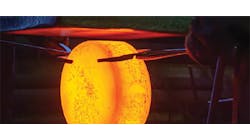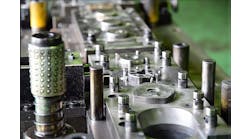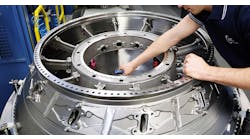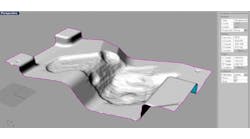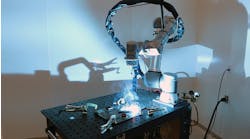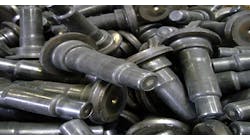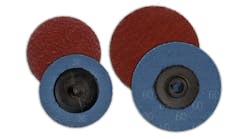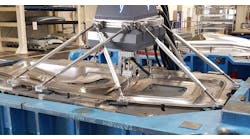An environmentally friendly, one-step lubricant has been performing effectively and reliably in commercial application for over a year at a tube drawing facility. Developed by Sisu Chemicals LLC, Scibond SL-87 is based on an acrylic polymer, like a latex paint. It is a suitable replacement for the zinc phosphate and halogenated oil lubricants used in high stress applications, like tube drawing and cold heading — and cold forging.
Replacing zinc-phosphate and halogenated-oil die lubricants has been a target of the forging industry for several decades. The oils are hazardous to handle, and the low molecular-weight formulations have been phased out, while the high molecular-weight varieties are still under target for elimination.
A zinc-phosphate lubricant generates a heavy metal sludge that is considered hazardous, and has to be removed, in some cases several times a month. Then, new baths must be generated.
The commonly used zinc-phosphate system is based on the reaction of zinc oxide/phosphoric acid with the metal surface to form a conversion coat. Then, the plated zinc is reacted with a metal stearate to provide the lubrication. The metal has to be cleaned and prepared for this reaction by high-temperature caustic and then acid baths, and a neutralizer bath is needed between the zinc phosphate and stearate bath.
All these reactive baths have to be applied at high temperatures, on the order of 185°F, and have several rinses between steps. These baths must be maintained at the high temperature throughout their lifecycles. As the reactive components get consumed, the effectiveness of the lubrication is diminished to the point that it must be replaced. This is a very complex and energy-intensive system but it has been the standard of the cold forging industry, as no alternative existed.
By contrast, the process for applying the Scibond SL-87 involves simply dipping the tubes into the polymer bath and drying. This bath is maintained at about 115-120°F and can be cooled to room temperature when not in use, as may be the case of a weekend or vacation shut-down. Then, the bath is brought back to temperature when use resumes. The new lubricant is a polymeric coating and not a reactive species, so the activity remains constant over time. This means that its performance results do not fade, and the bath is not replaced.
We have been running the same charge for over a year, only topping-off as necessary. Because the polymer is diluted with water at almost a 1:1 ratio, the subsequent demand for new product is quite low, so the in-use raw material costs remain very low. We have seen that the polymer bath remains active over a very long time. A previous version requiring a conversion coat has been using the same charge for over 10 years, only topping-off the level as necessary.
The quality of the tubes formed with this polymeric lubricant is reported to exceed the results of products formed using the zinc-phosphate lubricant. All locations that have run this material report that the surface properties are much smoother, and if starting with a tube that has been gloss annealed the product will pass the requirements for SSID applications. Improved results also are seen from buffing the tools, but no excessive tool wear is reported.
For tube drawing, current production is drawing carbon steel products; however, brass, copper, and more recently stainless-steel tubes have been drawn successfully, too.
In addition to the raw material savings, this system represents a significant energy savings in that the high-temperature baths are no longer necessary. The rinses are eliminated, saving water consumption and the treatment into the municipal water-treatment plants.
The primary focus of the polymer formulation has been for tube drawing, however a trial for cold heading has been conducted, too. In that case, the wire was shot blasted, sprayed with the lubricant, and allowed to air dry. The full zinc-phosphate process was run as a control. Both samples were double-drawn through a draw box with Condat’s Vicafil Salvia 2. Two bolt heads from the trial are shown here. The result using the polymer showed slight discoloration but better definition of the pattern, indicating that the metal flowed into the die more easily. The result using zinc phosphate shows a defect on the ridge near the 9, where there were no defects seen with the polymer.
Scibond SL-87 is a major step forward in cold forging lubrication. The advantages include a significant reduction of steps, dramatic energy savings, elimination of hazardous waste streams, and elimination of handling hazardous lubricants. We have seen quality improvements and quality consistency. In-use costs have been dramatically reduced. All waste streams from the plants can be eliminated. No need for multiple heated tanks and lower energy usage provide an opening for the cold-forging market sector.
David Stark is the president of Sisu Chemical LLC, developers of water-based emulsion polymers, including metalworking lubricants. Contact him at [email protected], or tel. 919-260-5309.
